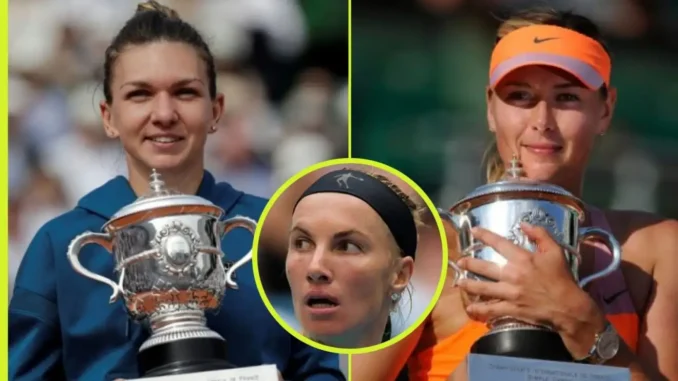
The world of professional tennis is no stranger to controversies, and the recent situation involving Simona Halep has reignited discussions about the complexities of anti-doping regulations and their impact on athletes. Halep, a former world No. 1 and a two-time Grand Slam champion, has found herself at the center of a storm following a “damaged” verdict, as described by a former world No. 2. This verdict, and the subsequent comparisons to Maria Sharapova’s own doping case, have added layers of complexity to an already delicate situation.
Halep’s career has been marked by remarkable achievements, including her victories at the French Open and Wimbledon. She has consistently demonstrated her resilience and her unwavering dedication to the sport. Her journey has been an inspiration to many, and her contributions to women’s tennis are undeniable. However, the recent developments have cast a shadow over her career, raising questions about her future in the game.
The “damaged” verdict, as described by a former world No. 2, refers to the circumstances surrounding Halep’s case. While the specifics of the verdict haven’t been fully disclosed, it’s understood that it involves complexities and potential inconsistencies that have raised concerns within the tennis community. This has led to comparisons with Maria Sharapova’s case, which also involved a controversial doping ban.
Sharapova’s case, which dates back several years, involved a substance that she had been taking for medical reasons for many years. The controversy surrounding her ban stemmed from the fact that the substance was recently added to the list of prohibited substances, and Sharapova claimed she was unaware of the change. Her case sparked a wider debate about the clarity and communication of anti-doping regulations, as well as the responsibility of athletes to stay informed about these ever-evolving rules.
The comparisons between Halep and Sharapova’s cases highlight the challenges that athletes face in navigating the complex world of anti-doping regulations. These regulations are designed to ensure fair play and protect the integrity of the sport, but they can also be difficult to interpret and apply consistently. Athletes are often under immense pressure to perform at the highest level, and they rely on their support teams to keep them informed about the latest rules and regulations. However, even with the best support systems in place, it’s possible for athletes to inadvertently fall foul of the rules, as both Sharapova and, potentially, Halep’s cases demonstrate.
The “damaged” verdict in Halep’s case suggests that there may be mitigating circumstances or procedural issues that need to be addressed. It’s crucial that the investigation is conducted thoroughly and transparently, ensuring that Halep is given a fair hearing and that all relevant factors are taken into consideration. The tennis community is watching closely, eager to understand the full details of the case and to see how it will be resolved.
The situation also raises questions about the role of governing bodies in ensuring clarity and consistency in the application of anti-doping regulations. It’s essential that these regulations are clear, accessible, and communicated effectively to athletes. Furthermore, there needs to be a fair and transparent process for investigating potential violations, ensuring that athletes are treated fairly and that their rights are protected.
The comparisons between Halep and Sharapova’s cases also serve as a reminder of the impact that doping bans can have on an athlete’s career. These bans can not only sideline athletes for significant periods but also damage their reputation and their earning potential. The psychological toll of such bans can be immense, and athletes often struggle to rebuild their careers after serving their suspensions.
As the Halep case unfolds, it’s crucial that the focus remains on ensuring a fair and transparent process. It’s also important to remember that Halep is a human being, and she deserves to be treated with respect and dignity throughout this process. The tennis community should refrain from making judgments until all the facts are known and the investigation is complete.
The Halep case is a complex and sensitive one, with implications for the future of the sport. It’s a reminder of the challenges that athletes face in navigating the world of anti-doping regulations, and it highlights the need for greater clarity, consistency, and transparency in the application of these rules. As the tennis world awaits the outcome of the investigation, it’s crucial that we remember the human element and that we treat all those involved with fairness and compassion.
Leave a Reply